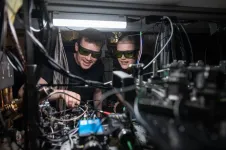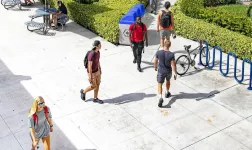In India, many kids who work in retail markets have good math skills: They can quickly perform a range of calculations to complete transactions. But as a new study shows, these kids often perform much worse on the same kinds of problems as they are taught in the classroom. This happens even though many of these students still attend school or attended school through 7th or 8th grades.
Conversely, the study also finds, Indian students who are still enrolled in school and don’t have jobs do better on school-type math problems, but they often fare poorly at the kinds of problems that occur in marketplaces.
Overall, both the “market kids” and the “school kids” struggle with the approach the other group is proficient in, raising questions about how to help both groups learn math more comprehensively.
“For the school kids, they do worse when you go from an abstract problem to a concrete problem,” says MIT economist Esther Duflo, co-author of a new paper detailing the study’s results. “For the market kids, it’s the opposite.”
Indeed, the kids with jobs who are also in school “underperform despite being extraordinarily good at mental math,” says Abhijit Banerjee an MIT economist and another co-author of the paper. “That for me was always the revelation, that the one doesn’t translate into the other.”
The paper, “Children’s arithmetic skills do not transfer between applied and academic math,” will be published in Nature. The authors are Banerjee, the Ford Professor of Economics at MIT; Swati Bhattacharjee of the newspaper Ananda Bazar Patrika, in Kolkata, India; Raghabendra Chattopadhyay of the Indian Institute of Management in Kolkata; Duflo, the Abdul Latif Jameel Professor of Poverty Alleviation and Development Economics at MIT; Alejandro J. Ganimian, a professor of applied psychology and economics at New York University; Kailash Rajaha, a doctoral candidate in economics at MIT; and Elizabeth S. Spelke, a professor of psychology at Harvard University.
Duflo and Banerjee shared the Nobel Prize in Economics in 2019 and are co-founders of MIT’s Jameel Abdul Lateef Poverty Action Lab (J-PAL), a global leader in development economics.
Three experiments
The study consists largely of three data-collection exercises with some embedded experiments. The first one shows that 201 kids working in markets in Kolkata do have good math skills. For instance, a researcher, posing as an ordinary shopper, would ask for the cost of 800 grams of potatoes sold at 20 rupees per kilogram, then ask for the cost of 1.4 kilograms of onions sold at 15 rupees per kilo. They would request the combined answer — 37 rupees — then hand the market worker a 200 rupee note and collect 163 rupees back. All told, the kids working in markets correctly solved this kind of problem from 95 to 98 percent of the time by the second try.
However, when the working children were pulled aside (with their parents’ permission) and given a standardized Indian national math test, just 32 percent could correctly divide a three-digit number by a one-digit number, and just 54 percent could correctly subtract a two-digit number from another two-digit number two times. Clearly, the kids’ skills were not yielding classroom results.
The researchers then conducted a second study with 400 kids working in markets in Delhi, which replicated the results: Working kids had a strong ability to handle market transactions, but only about 15 percent of the ones also in school were at average proficiency in math.
In the second study, the researchers also asked the reverse question: How do students doing well in school fare at market math problems? Here, with 200 students from 17 Delhi schools who do not work in markets, they found that 96 percent of the students could solve typical problems with a pencil, paper, unlimited time, and one opportunity to self-correct. But when the students had to solve the problems in a make-believe “market” setting, that figure dropped to just 60 percent. The students had unlimited time and access to paper and pencil, so that figure may actually overestimate how they would fare in a market.
Finally, in a third study, conducted in Delhi with over 200 kids, the researchers compared the performances of both “market” and “school” kids again on numerous math problems in varying conditions. While 85 percent of the working kids got the right answer to a market transaction problem, only 10 percent of nonworking kids correctly answered a question of similar difficulty, when faced with limited time and with no aids like pencil and paper. However, given the same division and subtraction problems, but with pencil and paper, 59 percent of nonmarket kids got them right, compared to 45 percent of market kids.
To further evaluate market kids and school kids on a level playing field, the researchers then presented each group with a word problem about a boy going to the market and buying two vegetables. Roughly one-third of the market kids were able to solve this without any aid, while fewer than 1 percent of the school kids did.
Why might the performance of the nonworking students decline when given a problem in market conditions?
“They learned an algorithm but didn’t understand it,” Banerjee says.
Meanwhile, the market kids seemed to use certain tactics to handle retail transactions. For one thing, they appear to use rounding well. Take a problem like 43 times 11. To handle that intuitively, you might multiply 43 times 10, and then add 43, for the final answer of 473. This appears to be what they are doing.
“The market kids are able to exploit base 10, so they do better on base 10 problems,” Duflo says. “The school kids have no idea. It makes no difference to them. The market kids may have additional tricks of this sort that we did not see.” On the other hand, the school kids had a better grasp of formal written methods of divison, subtraction, and more.
Going farther in school
The findings raise a significant point about students skills and academic progress. While it is a good thing that the kids with market jobs are proficient at generating rapid answers, it would likely be better for the long-term futures if they also did well in school and wound up with a high school degree or better. Finding a way to cross the divide between informal and formal ways of tackling math problems, then, could notably help some Indian children.
The fact that such a divide exists, meanwhile, suggests some new approaches could be tried in the classroom.
Banerjee, for one, suspects that part of the issue is a classroom process making it seem as if there is only one true route to funding an arithmetic answer. Instead, he believes, following the work of co-author Spelke, that helping students reason their way to an approximation of the right answer can help them truly get a handle on what is needed to solve these types of problems.
Even so, Duflo adds, “We don’t want to blame the teachers. It’s not their fault. They are given a strict curriculum to follow, and strict methods to follow.”
That still leaves open the question of what to change, in concrete classroom terms. That topic, it happens, is something the research group is in the process of weighing, as they consider new experiments that might address it directly. The current finding, however, make clear progress would be useful.
“These findings highlight the importance of educational curricula that bridge the gap between intuitive and formal mathematics,” the authors state in the paper.
Support for the research was provided in part by the Abdul Latif Jameel Poverty Action Lab’s Post-Primary Education Initiative, the Foundation Blaise Pascal, and the AXA Research Fund.
###
Written by Peter Dizikes, MIT News
END






